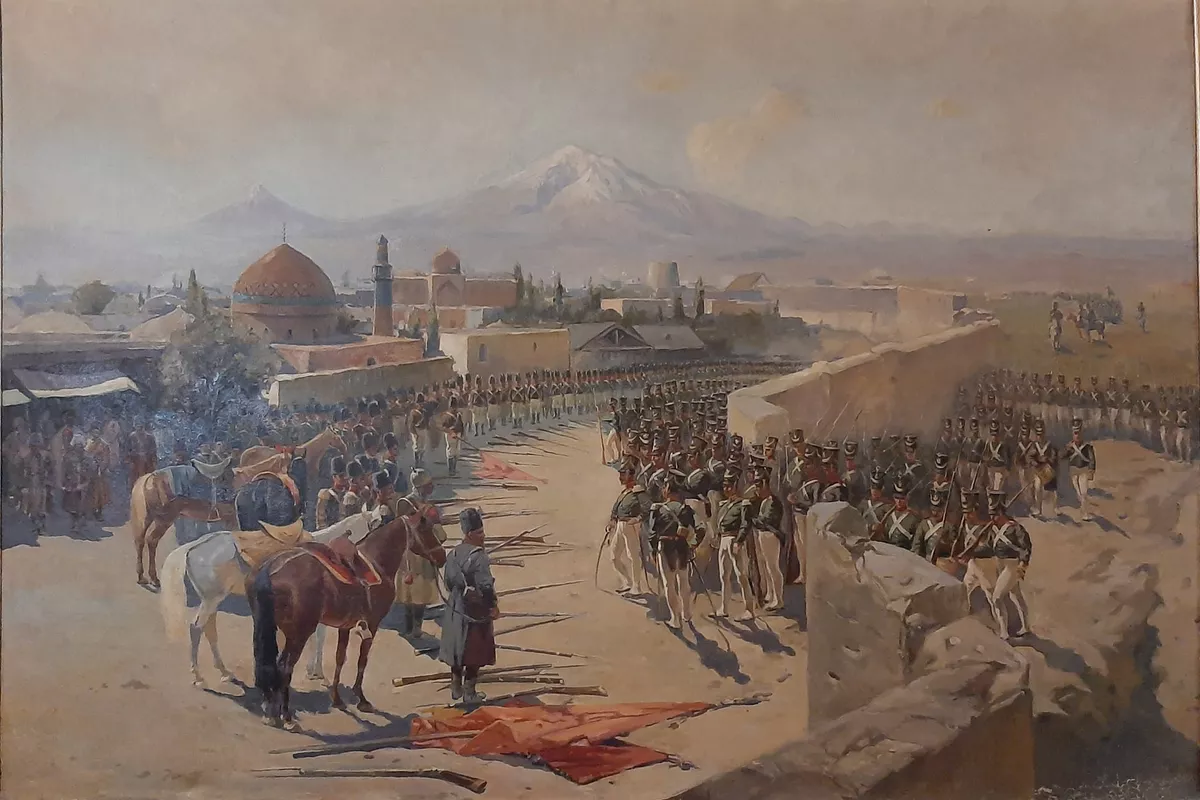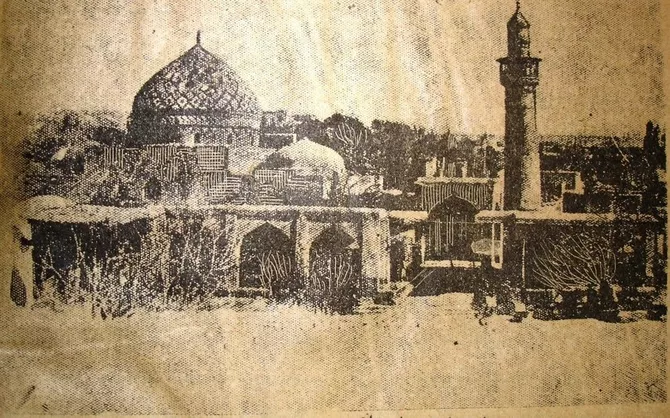
Photo credit: Wikipedia
In recent years, Azerbaijan has taken steady steps to restore its historical and cultural narrative, particularly in regions where identity was suppressed or erased. One of the most significant developments in this context has been the revival of the Iravan Kaziyat -a religious and cultural institution once central to the spiritual life of Azerbaijani Muslims in the South Caucasus.
At the forefront of this conversation is Farida Safiyeva-Doctor of Philology, professor, and Chairwoman of the Iravan City Community of Western Azerbaijan. Known for her deep scholarly insight and active civic engagement, she has become one of the leading voices shaping a renewed understanding of Iravan’s historical and cultural role.
In an exclusive interview with The Caspian Post, Safiyeva reflects on the symbolic and institutional significance of reviving the Kaziyat, the broader cultural strategy behind it, and how historical memory is being transformed into a foundation for national identity and future vision.

- Ms. Farida, the recent decision by the Council of Kaziyats of the Caucasus Muslims Office to restore the Iravan Kaziyat and appoint a new kazi has, without exaggeration, become a turning point. In your view, what is the core value of this step: religious revival, symbolic gesture, or institutional affirmation of historical memory?
- I believe the strength of this decision lies precisely in its ability to unify all three dimensions you mentioned. But if I had to highlight the most important, it is undoubtedly the institutional affirmation of the right to historical memory. Because historical memory is not simply a retrospective glance-it is the very fabric from which national identity is woven, the foundation of spiritual continuity and inner sovereignty.
When we speak of reviving the Iravan Kaziyat we are speaking of restoring a voice. A voice that for too long was silenced. A voice that not only remembers-but shapes. It tells the world: “We were here. We are here. And we have a future.”
Yes, this step carries deep religious meaning as well. For centuries, religious institutions for Azerbaijanis have been more than places of worship-they were centers of education, social cohesion, and moral balance. Iravan was not merely a point on the map, but a cultural and spiritual axis. The restoration of the Kaziyat is a return to those coordinates. To a spiritual architecture shaped over centuries by Muslim Iravan.
And finally, we must not underestimate the symbolic power of this gesture. It is more than just a religious or bureaucratic decision-it is a bridge. A bridge between a past that others tried to erase, and a future we are actively building. It is a tribute to the memory of our ancestors, to their courage, to their right to exist, and to our responsibility before them.
But this is not about nostalgia. It is not a backward-looking act of longing. It is, rather, an act of subjecthood-the creation of an institutional platform from which future strategies can grow. Historical memory is not a currency in which national resilience is measured-it is the foundation of identity. And today, we affirm that we have both the right and the resolve to claim it.
- Given your years of contribution to science and culture, how do you view the role of the Iravan Kaziyat in reviving Islamic enlightenment and spiritual identity amid decades of historical erasure and the renaming of toponyms in the region?
- Against the backdrop of long silences and intentional oblivion, the name Iravan regains significance-not as a nostalgic symbol, but as a starting point for the revival of Islamic identity and intellectual tradition. The restoration of the Iravan Kaziyat is viewed by the scholarly community not as a mere formal gesture but as a strategic assertion of historical truth.
From the perspective of a scholar who has spent many years studying the Islamic heritage of the South Caucasus, this moment is an intellectual turning point-a reawakening of an institution of memory that had been frozen in historical stasis.
The Iravan Kaziyat can become a platform for a new type of Islamic enlightenment, one that integrates academic rigor, cultural continuity, and respect for religious autonomy. It is a space where theology meets history, archive meets prayer, and knowledge meets identity.
In a context where hundreds of mosques, madrasas, and the names of renowned scholars were erased from maps, textbooks, and even oral tradition, the reintegration of Iravan into the religious-administrative landscape is a quiet revolution. This is not an act of protest-it is an act of remembrance transformed into foresight.
Archival records document over 300 mosques and dozens of madrasas in the region before the 20th century. Generations of Islamic thinkers were formed there. One of them-Ayatollah al-Uzma Mirza Ali Iravani-is still honored in Islamic scholarly centers such as Qom and Najaf. His descendants remain influential in the spiritual life of those cities to this day.
The revival of the Iravan Kaziyat is a deliberate step that places the regional Islamic tradition at the heart of a global conversation-about identity, about overcoming historical distortions, and about strengthening cultural memory.
- In light of the Kazi’s appointment in Iravan, a crucial question arises: Is this part of a broader cultural strategy by Azerbaijan to reclaim heritage beyond its current borders? What diplomatic, cultural, and identity-driven vectors are being activated in this process-and where might resistance emerge?

- The appointment of a Kazi in Iravan goes far beyond the scope of an administrative act. It is an expression of a broader, carefully considered cultural strategy of the Republic of Azerbaijan-one aimed at restoring historical memory and reinforcing national identity. Amid a rapidly changing global order, Baku is advancing its own humanitarian agenda-balanced, thoughtful, and rooted in a dialogue between past and future.
Under the leadership of President Ilham Aliyev, this policy has taken on a systematic structure. In recent years, we have seen a consistent line: commemorating historic dates and anniversaries related to Iravan, launching cultural initiatives, restoring architectural monuments, opening new institutions, and now-the symbolic revival of spiritual structures. Together, these actions form a strategic platform that binds cultural heritage to national identity in the present.
This is a profound rethinking of history-not as a static record, but as a living space full of meaning, shaping how we see ourselves and the world. These steps help raise new generations in the spirit of reverence for cultural roots, building lasting links between society and its historical experience. They foster a sense of belonging and reveal the rich mosaic of national consciousness.
At the same time, such a cultural policy demands great sensitivity and strategic vision. Given the geopolitical complexity of the region, every move must be backed by scholarly justification, well-reasoned arguments, and diplomatic nuance. A key component of this work is the development of research platforms, educational initiatives, digital archives, and museum projects-an infrastructure capable not only of preserving memory but of creating an intellectual environment for the future.
Today, the name Iravan once again enters Azerbaijan’s cultural and political lexicon-not as a symbol of loss, but of presence. Not as a territorial claim, but as a return of meaning. In this context, Iravan becomes a metaphor for a spiritual space-one that we approach with respect, with knowledge, and with confidence in historical truth.
Azerbaijan’s cultural policy in the 21st century represents a synthesis of religion, history, science, and education-transformed into a stronghold of national spirit. And this project, steadily taking shape, is already crafting a new philosophy of state-driven humanitarian strategy: thoughtful, contemporary, global-facing-and deeply rooted in our own essence.
Share on social media